Recommendation points
- Where is the use of screw piles justified?
- Diagram of the pile-grillage foundation
- Use to strengthen operated foundations
- Pile tightening process
Weak soils have always been an obstacle to capital construction. Screw piles are far from being an innovation, but their use has gained momentum relatively recently. Let’s talk about the technological advantages provided by screw piles and how to use them correctly..
Where is the use of screw piles justified?
There are inventions that are so far ahead of their time that the combined benefits of using them seem too incredible. Despite the fact that the idea of screwing in piles instead of using the traditional bored method has been known for more than 150 years, this technology has become ubiquitous only today..
Due to its wide distribution, the screw pile industry has received a tangible impetus to development, which is due to the emergence of several varieties at once. Most often, the concept of VS means piles with a welded single-blade tip. They are the easiest to manufacture and can be produced in small volumes in almost any workshop that has a welding machine and a forge. It is this type that takes the lion’s share of the market and is applicable for a wide range of tasks: from the construction of fences to low-rise frame buildings.
Slightly less popular are cast pile tips with blades of one and one and a half turns. Due to the lack of welding seams, such products are more durable and reliable, their scope extends up to military engineering construction. It is these piles that are recommended for use in capital construction..
The main prerequisite for serious consideration of the foundation on screw piles as the main building technology remains the insufficient supporting capacity of the upper layers of the soil. The main advantage is that when constructing the supporting base of the house, you no longer need to carry out large-scale excavation and site planning: the piles can be twisted anywhere. Even in rocky or frozen ground, where leader wells are drilled for them. If one blade on the tip is not enough, the propellers can be repeated every 1–2.5 meters, increasing the bearing capacity.
The use of screw piles is not limited to residential or commercial construction. On the contrary: due to their versatility, they can be used to solve such specific tasks as the construction of moorings, bases for masts, banners and flagpoles, or even to strengthen the moving layers of soil on the sides of beams and ravines. For screw piles, deepening even 20 meters is not a ceiling at all, therefore, due to the support on a denser soil layer, they not only demonstrate excellent stability, but can also take the full operational load immediately after twisting..
Even in earthquake-prone regions and with a high probability of landslides, there is always an opportunity to gain a foothold in deeper limestone. In such cases, narrow-blade piles are used. Another name – pile screws – characterizes much better both their appearance and the principle of operation.
Diagram of the pile-grillage foundation
The mechanics of screw piles are quite simple: the blades prevent the punching and delamination of the soil, and the pile rod perceives the axial load and has no tendency to deformation due to the dense environment surrounding it.
1 – plant and soil layer; 2 – loam; 3 – clay; 4 – solid ground; 5 – steel pipe; 6 – pile tip; 7 – load distribution
However, the fulcrum alone is not enough for subsequent construction. For screw piles, a head system has been developed, which makes it relatively easy to build a grillage according to one of three typical structures.
When it comes to engineering structures: bridges, pillars, ground anchors and frame structures, the piles are surrounded by a steel grillage. In the simplest case, this is a channel, the shelves of which are located vertically and serve as stiffening ribs. To assemble the elements into a single monolithic system, bolted connections are usually used. If the screw foundation does not provide for the possibility of repair and dismantling, the piles are simply welded to the grillage.
The second type of grillage is able to debunk the main misconception that when using screw piles, the possibility of a basement or subfloor is excluded. The grillage in this case is mounted on two levels. The upper one serves as a support for the enclosing structures, and the lower one serves to stabilize the foundation and eliminate deformations and compensate for lateral loads. There are many variations in the execution of such a system. The lower grillage can be hidden underground and is almost always located below the freezing depth so that the forces of frost heaving do not form pulling loads. Also, the lower tier can be aboveground if the upper one serves as a support for floor trusses or the building rises significantly above the ground, which is typical for land plots with a strong slope and embankments.
Finally, the grillage can be made with a reinforced concrete structure. For reliable adhesion to concrete, a reinforcing bar is wound on each pile. The advantage of such a system is that the grillage itself can serve as a supporting part: although it lies on less dense soil, its support area is much higher. In addition, compliance with protective concrete layers significantly increases the longevity of the grillage.
Use to strengthen operated foundations
As you already understood, the last type of pile-grillage system can also be represented by an ordinary foundation. In design practice, cases are quite common when the dead weight of a building’s reinforced concrete base works to the detriment of the required supporting capacity. It is required to somehow compensate for this phenomenon, which is possible by laying a small number of screw piles before pouring the strip foundation or slab and their direct linking with the reinforcing system.
However, even operating foundations can be strengthened in this way. This is due to the ability of piles to resist not only indentation, but also pulling out. If areas with insufficient soil density are accurately identified under the foundation, a trench is torn across the tape and two piles are screwed in with an interval of 1.5 to 3 meters. They are connected by a local steel grillage, which acts as a lever.
1 – wall; 2 – strip foundation; 3 – steel grillage; 4 – screw piles
Of course, this is not the only way to strengthen. Nothing prevents to strengthen the foundation by refilling from the street side. Concrete “extension” here serves for reliable coupling with the existing foundation, and the piles take the main load.
Pile tightening process
At large-scale facilities, screwing is performed using a mechanized method, involving drilling machines with an outrigger boom. The advantage here is high speed: one pile is twisted in about five minutes, that is, in one working day it is quite possible to twist about a hundred. An additional plus – the customer does not need to delve into the details of the process at all.
In individual construction, piles are often twisted by hand. All that is needed for this is the muscular strength of two people and a small device called a grandmother. It is mounted on the top of the barrel and has four rocker arms. The advantage of manual screwing is that it is possible to immerse the pile in the ground with a minimum offset from the existing capital structures, which is very useful in the construction of all kinds of terraces and extensions. The disadvantages include the laboriousness of the process (comparable to TISE piles) and the limited screw-in depth.
Before screwing in the piles, they must be treated with anti-corrosion treatment, even if the pipes and blades already have a galvanized layer. After twisting, the piles are adjusted by manual turning to obtain the desired level, the heads are fixed and the grillage is installed.

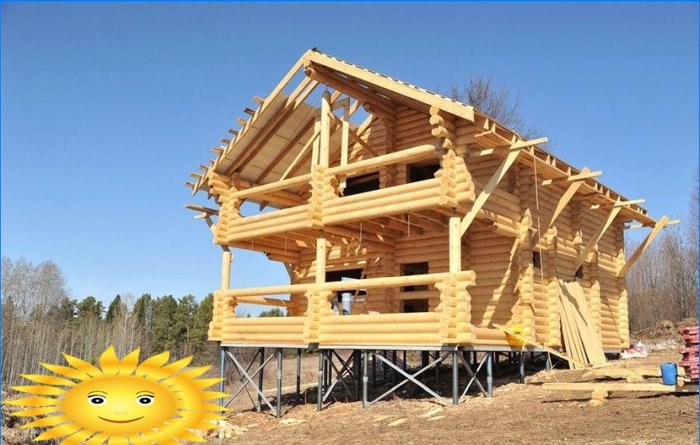
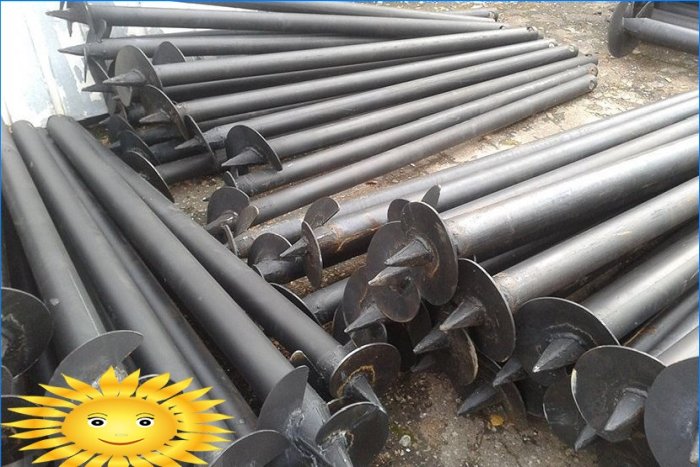

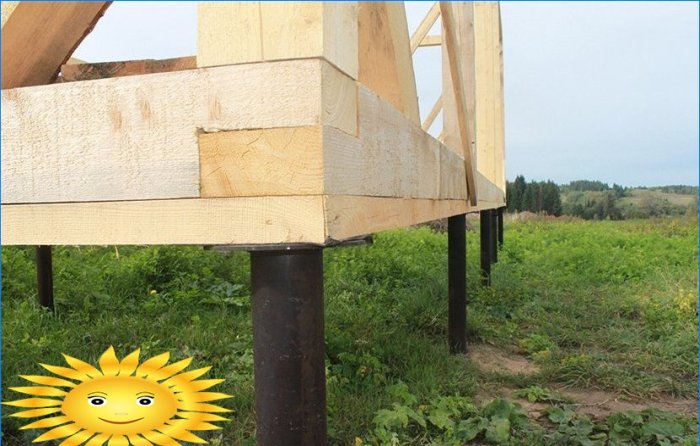
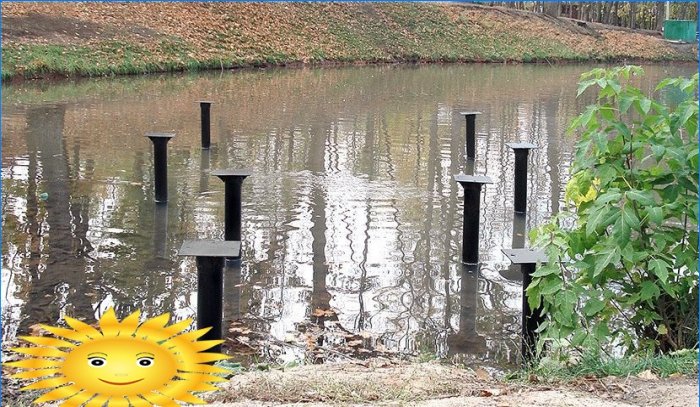
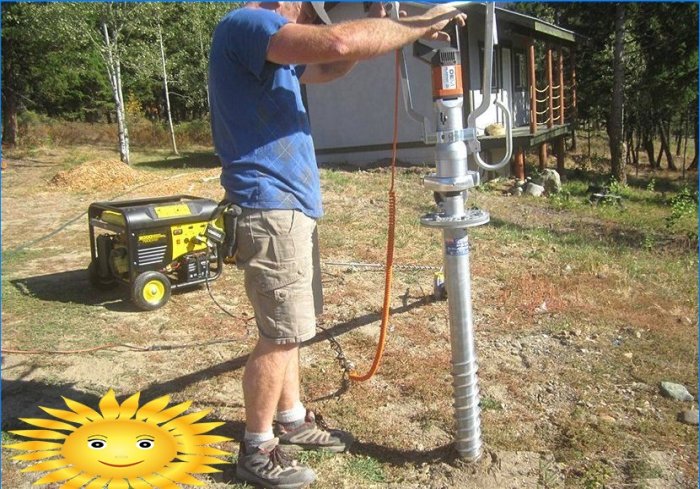
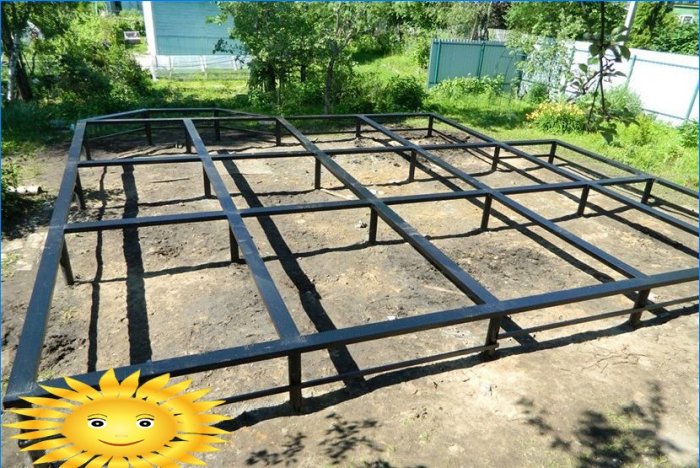
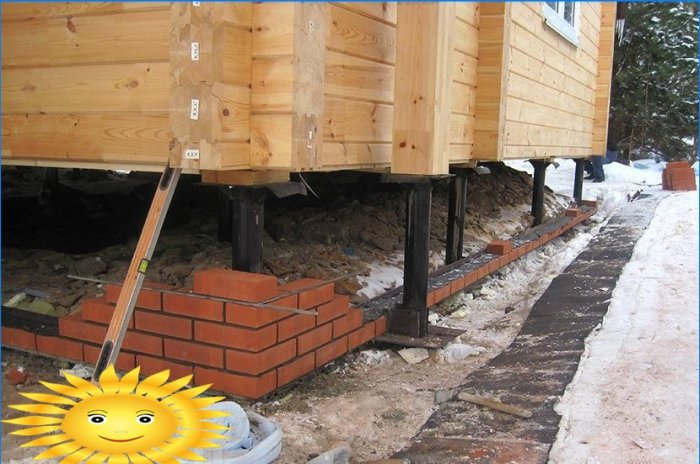
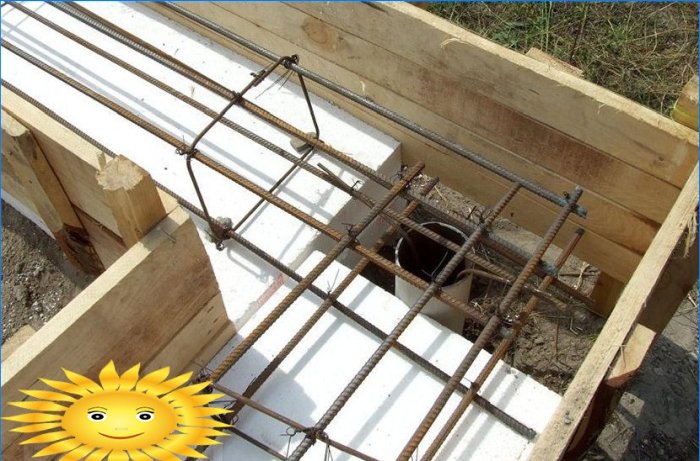
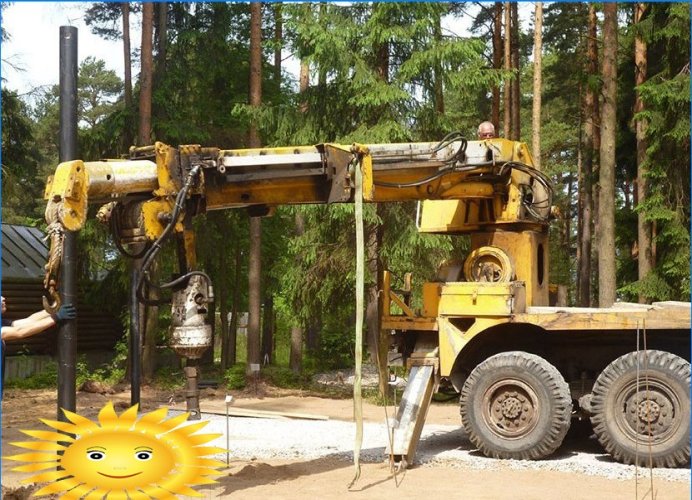

What are the main construction and installation features of screw piles?
What are the key construction and installation features of foundation on screw piles?